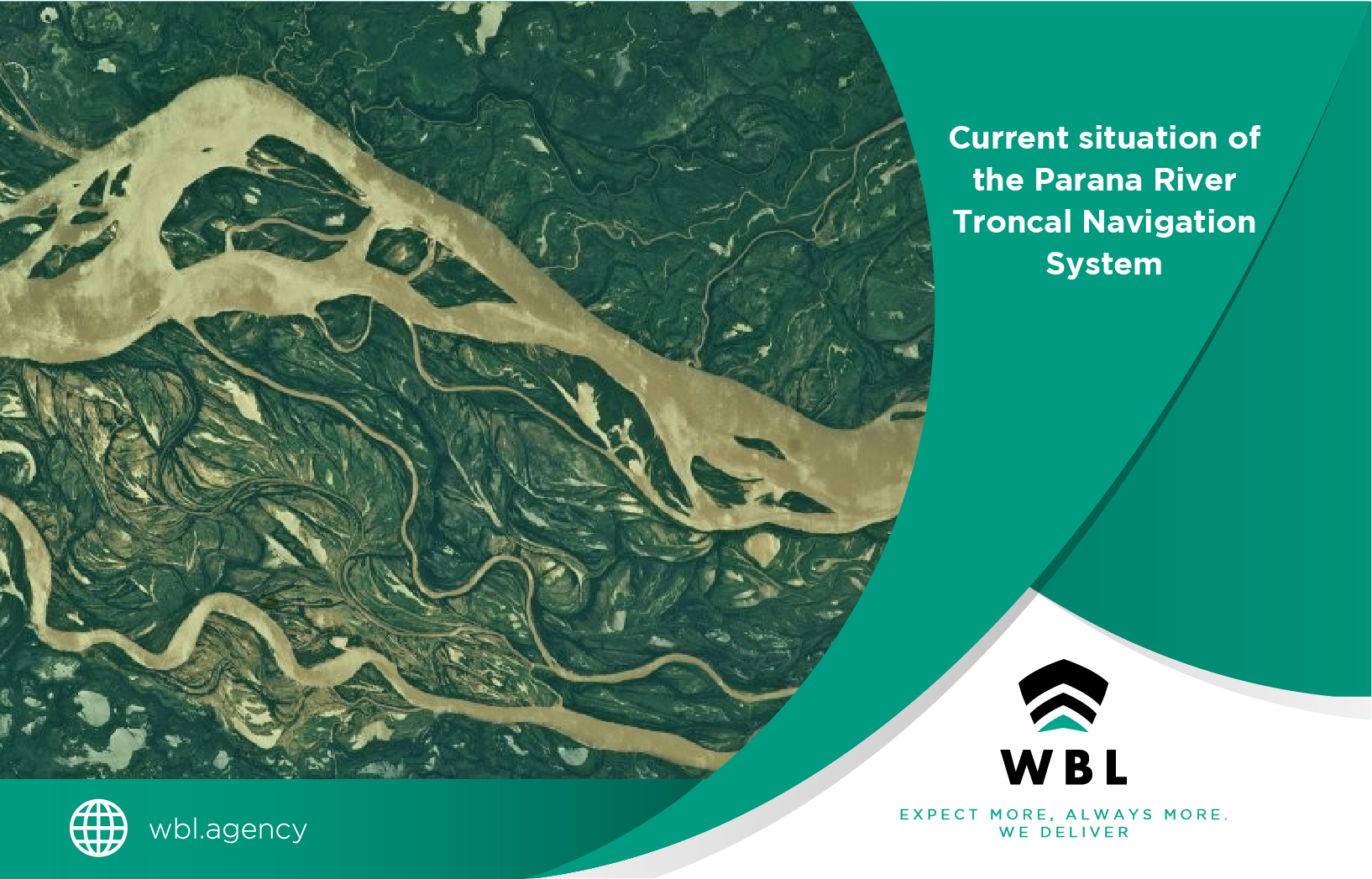Current situation of the Parana River Troncal Navigation System
The Trunk Waterway represents a vital logistics corridor for Argentina. It has a rich history, which provides relevant background and technical expertise at the time of making decisions about its future development.
Since 2006, after the current concessionaire reached the design depths established in the Minutes of Agreement of 02/16/2005, by Resolution No. 1,534 dated 08/28/2006, the former Ministry of Federal Planning, Public Investment and Services ratifies Provision N ° 6 of the former Sub-Secretariat of Ports and Inland Waterways, which allows navigation with a draft of 10.36 m (34 feet) from the Ocean to Puerto San Martín and 7.62 m (25 feet) from this last port to the access channel to the Port of Santa Fe, navigable depths that remain to date.
As already mentioned, we can subdivide the Santa Fe al Océano section into different sectors. From km 586 to km 470 we have 27 feet of depth (25 navigable feet added to 2 feet of security) in which we find 8 steps to be dredged and a sandy bottom. Following this, we find from km 470 to km 50, 36 feet deep (34 navigable feet plus another 2 feet of safety), 17 steps, and a sandy bottom. And finally, in the Río de La Plata, from km 50 to km 239, it would be 34 feet deep.
On January 22, 2010, Decree No. 113/10 was published in the Official Gazette of the Nation, ratifying the Agreement signed between the Unit for Renegotiation and Analysis of Public Service Contracts (UNIREN) and the company Hidrovia SA
Said understanding refers to the public works contract for tolls for the modernization, expansion, operation, and maintenance of the signaling system and the tasks of redoing and maintaining the main waterway. The contract included between kilometer 584 of the Paraná River, the outer section of access to the Port of Santa Fe, and the natural deep water areas in the outer Rio de la Plata up to kilometer 239.1 of the Punta Indio Canal, through the Channel Engineer Emilio Mitre.

In addition, it was agreed to extend the work from the area north of the Port of Santa Fe, between km. 584 at km. 1,619 by the Paraná – Paraguay rivers (Annex III of the Letter of Understanding).
The Agreement provided that the expansion works would be carried out in two stages:
Stage 1: from the area from km. 584 of the Paraná River, an external section of access to the Port of Santa Fe, up to km. 1,238 of the Paraná River, called Confluencia (SFC).
Stage 2: from Confluencia to Asunción. (The works would be carried out in binational waters of the Paraguay River).
However, the Santa Fe-Confluencia section is traveled by barges and smaller vessels, and the highest cargo density is constituted in the first place by grains (soybeans), followed by minerals and fuels.
Given that the dominant characteristic is a barge route, the route requires a 10-foot draft, which, adding 2-foot under-keel revenge, on soft soils, leads to a total depth of 12 feet.
It should be noted that the SFC section is actually a subsection of a more extensive navigation route, which continues upstream through the Alto Paraná, on the one hand, and the Paraguay River on the other since Confluencia does not represent a point of origin or destination of loads.
This section presents many critical crossings, but, unlike the one that goes from Santa Fe to the Ocean, most of these passages can be crossed by resorting to changes in the channel’s layout. Only in a very few of them are maintenance dredging works sporadically necessary.
